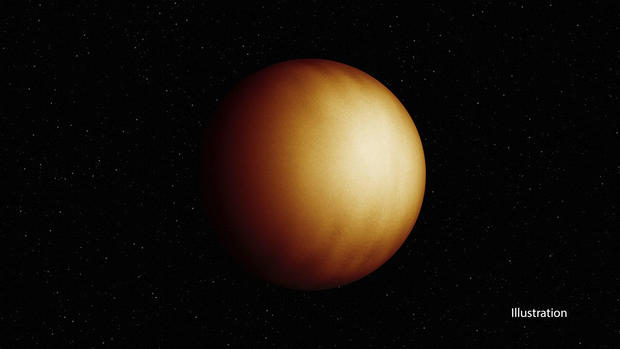Webb telescope discovers traces of water in atmosphere of exoplanet with mass of 10 Jupiters
NASA's high-powered James Webb Space Telescope has found water vapor in the atmosphere of a one-of-a-kind exoplanet hundreds of light-years from Earth.
The exoplanet, called WASP-18 b, was discovered by NASA in 2009 and is unique in a number of ways. It's a gas giant, 10 times more massive than Jupiter. Its orbit lasts just 23 hours, and the planet is fixed, meaning that one side always faces the sun and the other is always the dark side of the planet.
Scientists first made a brightness map of the exoplanet, then a temperature map of the atmosphere. The second map showed that there is a difference of up to 1,000 degrees between the hottest and coolest points of the planet. The temperatures also seemed to change based on elevation, by hundreds of degrees.
"JWST is giving us the sensitivity to make much more detailed maps of hot giant planets like WASP-18 b than ever before," said Megan Mansfield, a Sagan Fellow at the University of Arizona, and one of the authors of the paper describing the results, in a news release shared by NASA announcing the discoveries. "This is the first time a planet has been mapped with JWST, and it's really exciting to see that some of what our models predicted, such as a sharp drop in temperature away from the point on the planet directly facing the star, is actually seen in the data!"
NASA said that the major difference in temperatures is likely explained by something "hindering winds from efficiently redistributing heat to the night side," but it's not clear what that could be. Ryan Challener, a postdoctoral researcher at the University of Michigan and a co-author on the paper, said in NASA's news release that it's possible the planet has a strong magnetic field, which could explain the lack of winds.
Despite the planet's high heat — in some places, the temperature is almost 5,000 degrees Fahrenheit — there were still "multiple small but precisely measured water features" found by the Webb telescope in multiple elevations.
"Because the water features in this spectrum are so subtle, they were difficult to identify in previous observations. That made it really exciting to finally see water features with these JWST observations," said Anjali Piette, a postdoctoral fellow at the Carnegie Institution for Science and one of the authors of the new research, in NASA's news release.
The lead author of the paper, Louis-Philippe Coulombe, a graduate student at the University of Montreal, said the findings could be used to help researchers find similar water vapor in other atmospheres.
"By analyzing WASP-18b's spectrum, we not only learn about the various molecules that can be found in its atmosphere but also about the way it formed. We find from our observations that WASP-18 b's composition is very similar to that of its star, meaning it most likely formed from the leftover gas that was present just after the star was born," Coulombe said. "Those results are very valuable to get a clear picture of how strange planets like WASP-18 b, which have no counterpart in our solar system, come to exist."





